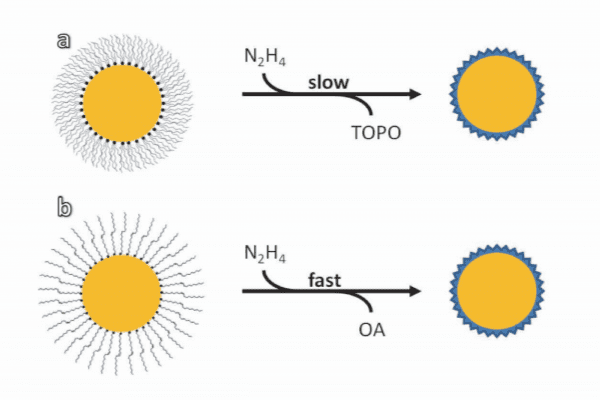Alexander Giles

Alexander Giles

Exploring the self assembly of cadmium selenide nanoparticles in Langmuir Blodgett films
Abstract:
The assembly of semiconductor nanocrystals into close packed films suitable for device engineering is critical to the development of next generation electronic and optoelectronic devices. These nanocrystals have nanometer dimensions and can be prepared by wet-chemical methods with tremendous control over their size and morphology. Thus far, limited techniques exist for the effective formation and deposition of single monolayer, large area films desired for advanced devices.
Such nanocrystal monolayers have been studied in this work with a Langmuirfilm trough. The Langmuir trough is a large (6 L) PTFE vessel filled with ultrapure water which nanoparticles can be spread onto. This technique exploits the nanocrystal stability at the air-water interface and controls the average interparticle spacing by varying the surface area available to the nanocrystal solution spread on the surface. The trough has been modified to perform both Langmuir Blodgett (vertical substrate) and Langmuir Schaffer (horizontal substrate) depositions. In addition to varying substrate orientation, film morphologies at varying surface pressures, subphase iconicity, and compression cycles were investigated. Both vertically and horizontally conductive devices were fabricated with sputter deposition and electron beam evaporation processes, with photolithographic techniques employed to write patterns for such devices. Furthermore, an atomic layer deposition system was constructed and developed to deposit current blocking layers in such devices.
Initial Langmuir isotherms exhibited collapse pressures at low pressures (30 mN/m) and extremely low coverage (0.001-0.005 monolayers), which was discovered to be a result of large quantities of unbound ligand in the nanocrystal spreading solution. Methods were developed to reduce the excess ligand concentration and nanocrystal films were realized at pressures as high as 55 mN/m and coverages above 0.1 monolayers. Devices showed both Schottky behavior with high resistivities (105-109 phm-cm) as well as Ohmic behavior at lower resistivities (10-1 ohm-cm), suggesting shorting due to insufficient film coverage.
While morphology remains a concern, methods were developed to produce robust, rigid nanocrystal films on an air-water interface and transfer them onto conductive substrates. Understanding of the particle-particle and particle-substrate interactions allowed for efficient preparation of substrates and spreading solutions, improving both film quality and throughput.
Sponsoring Chair: Dr. Edward Stokes
Committee: Dr. Jordan Poler, Dr. Stuart Smith, Dr. Marcus Jones, Dr. Faramarz Farahi